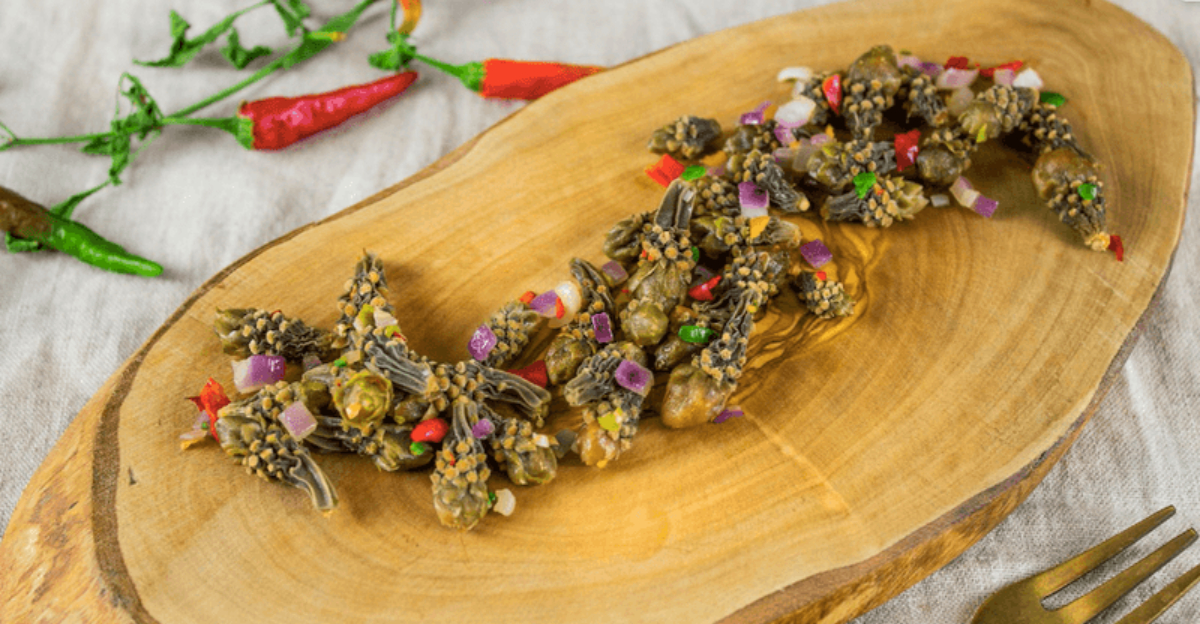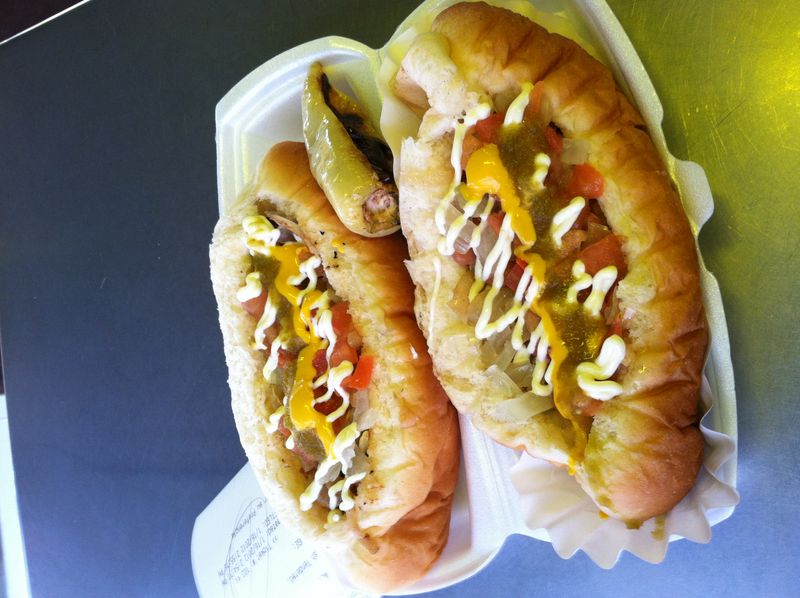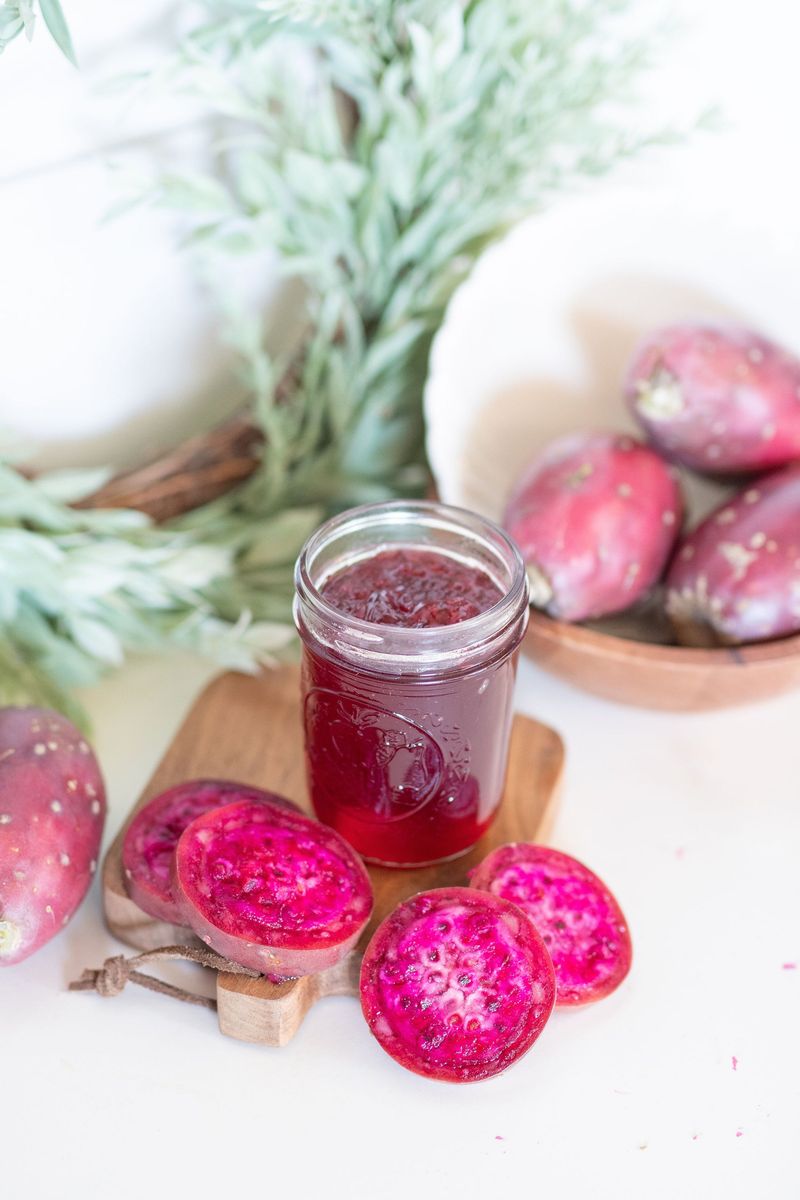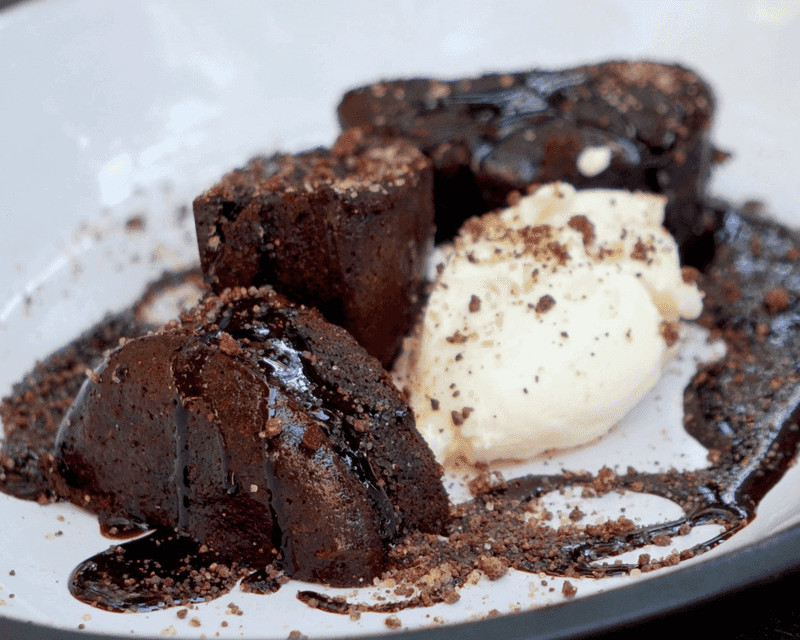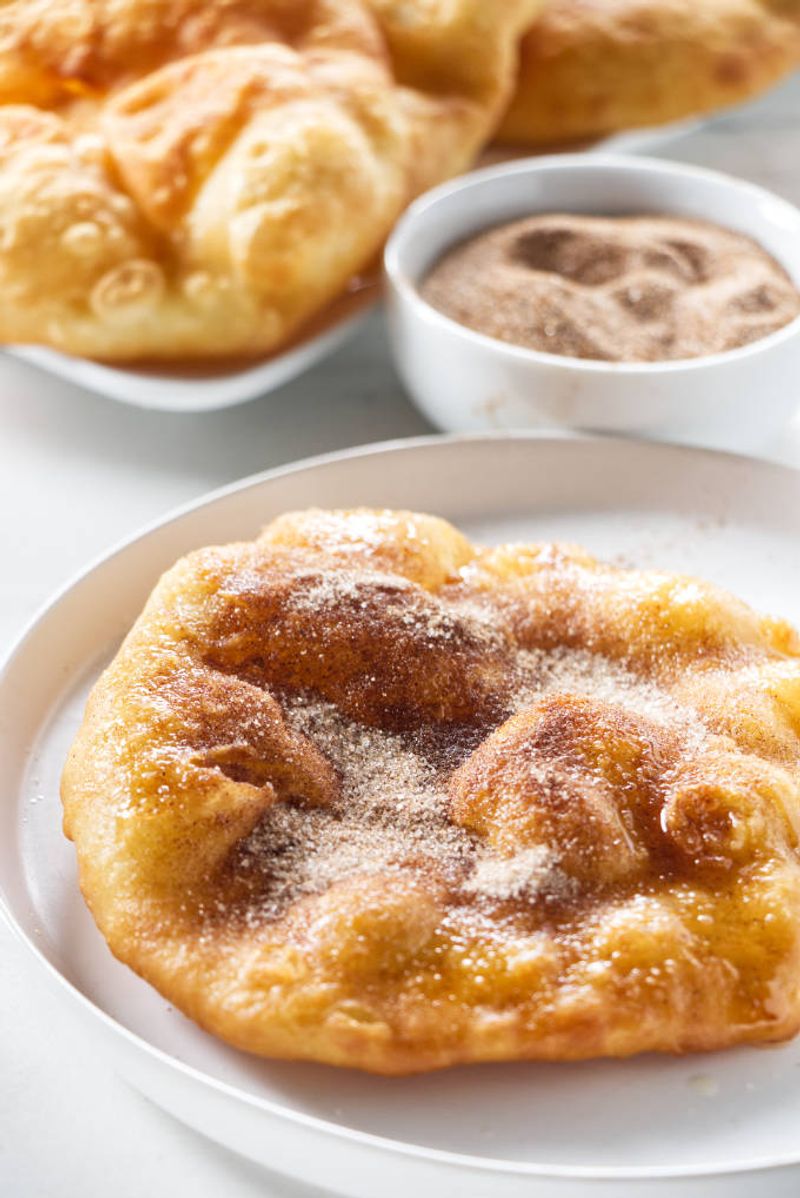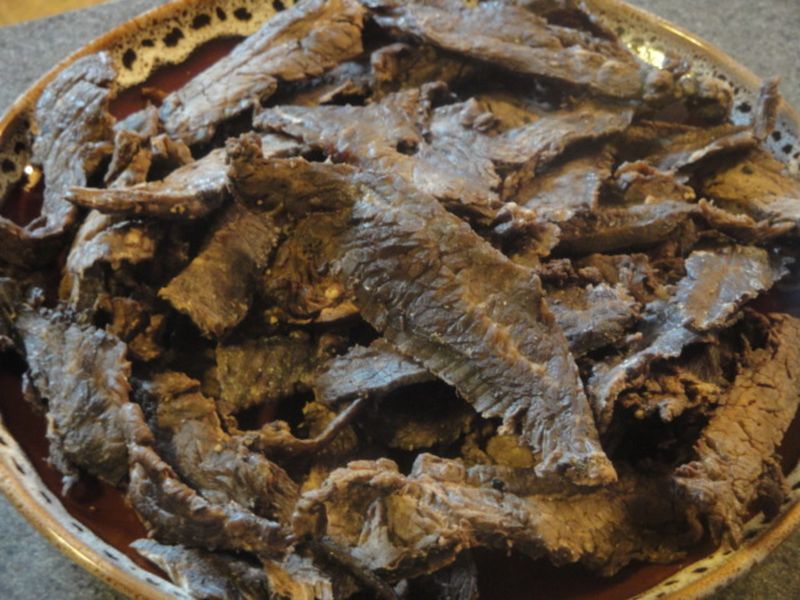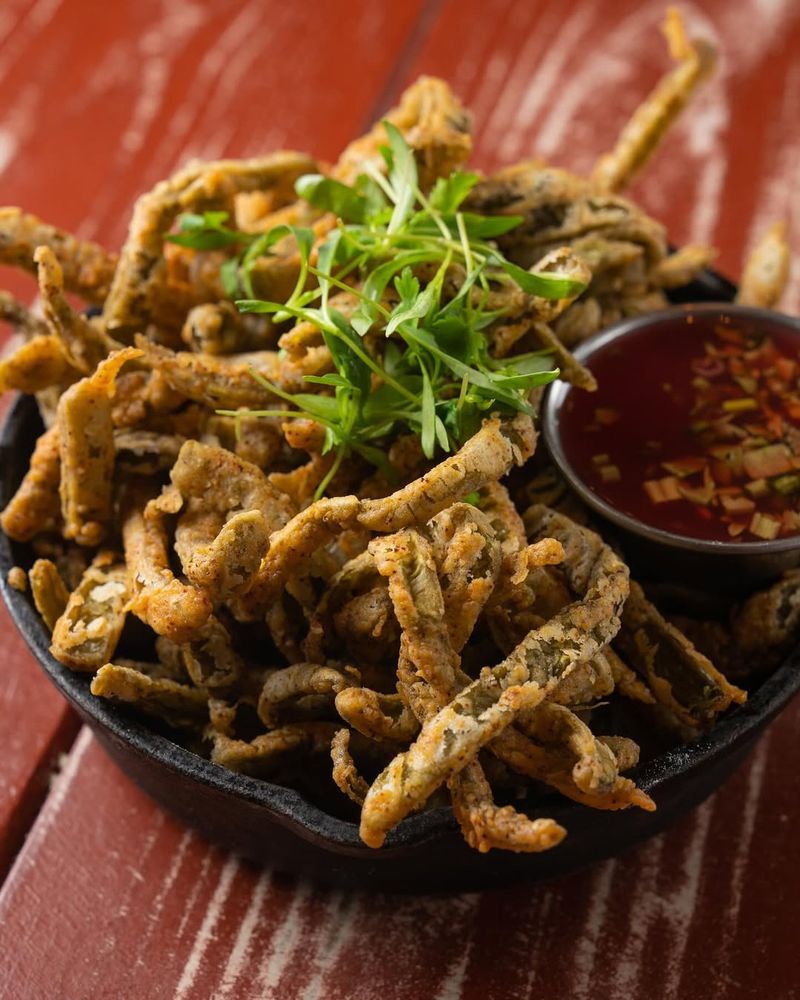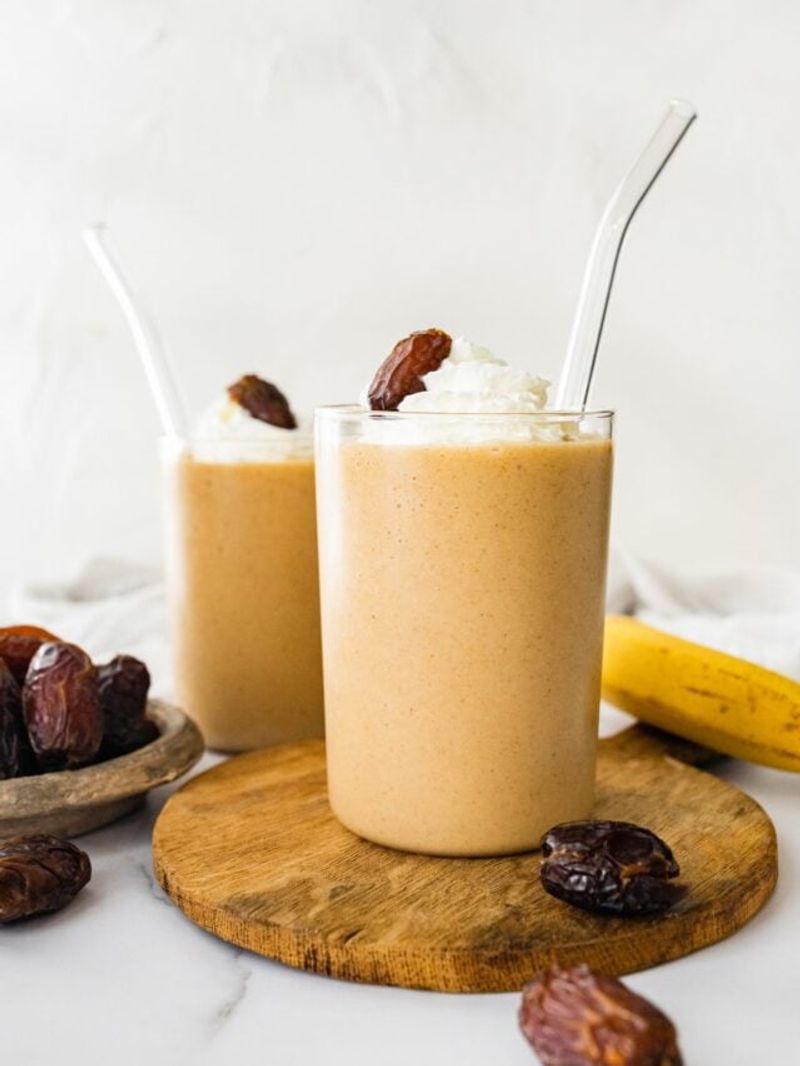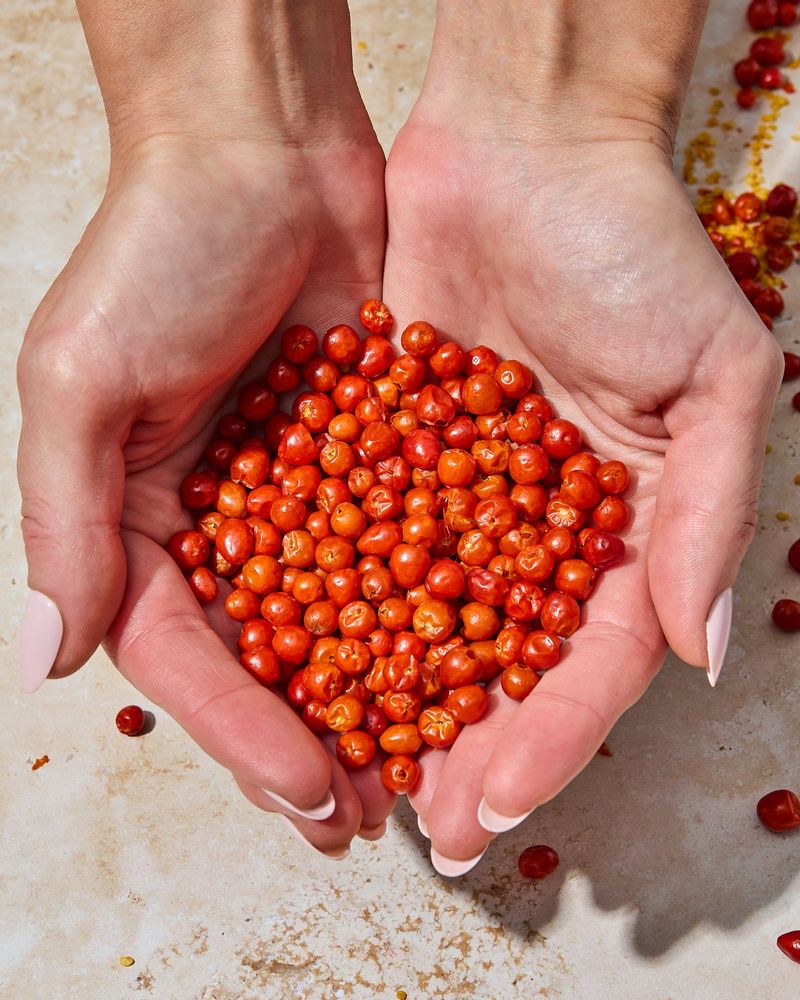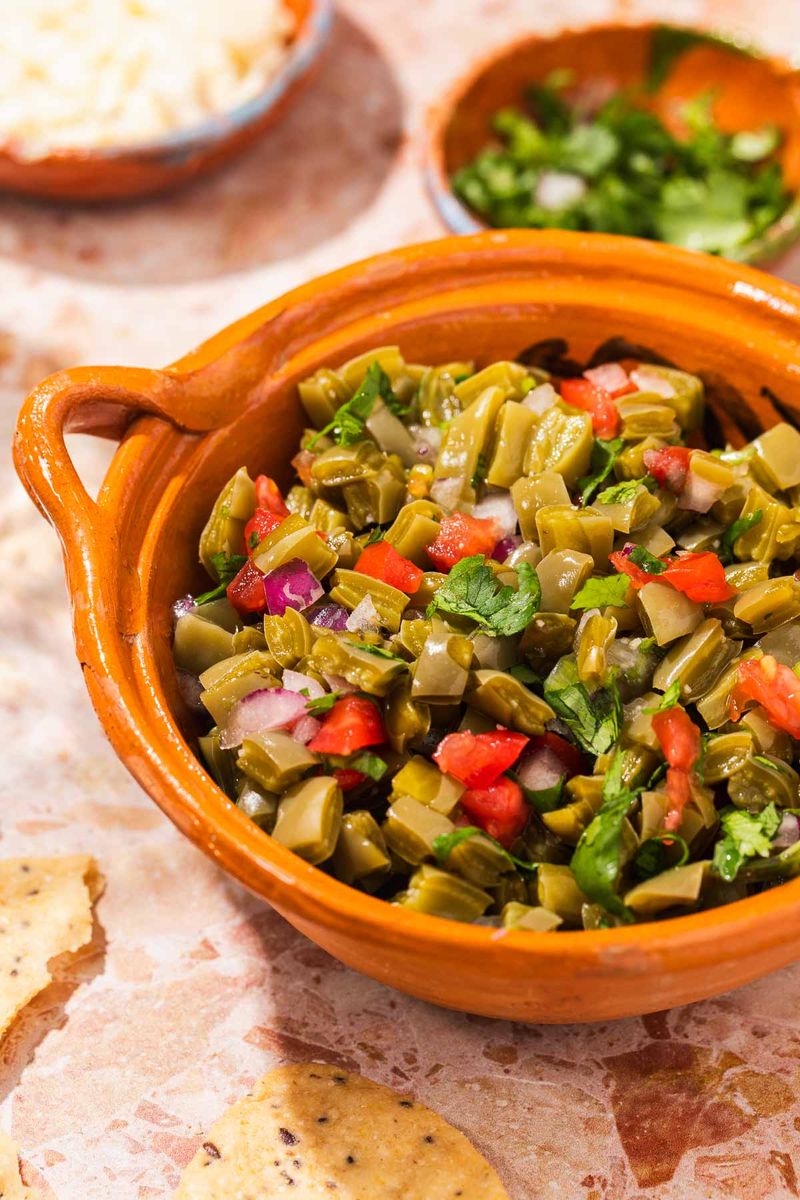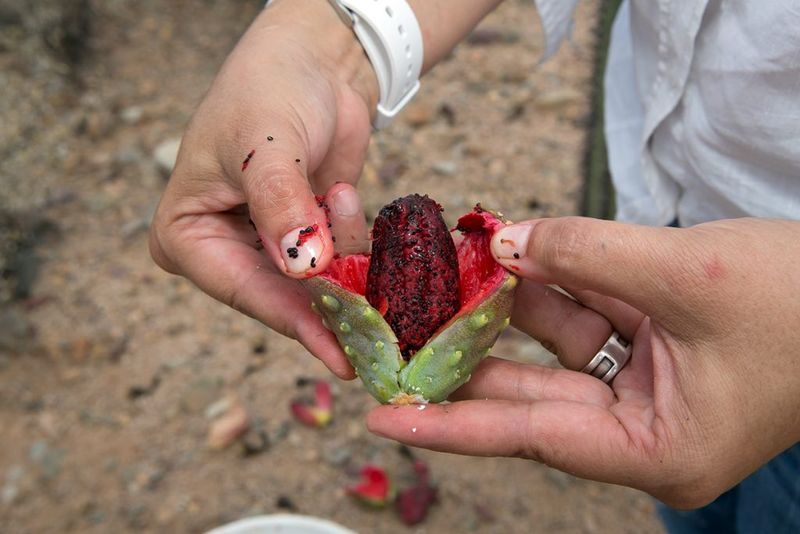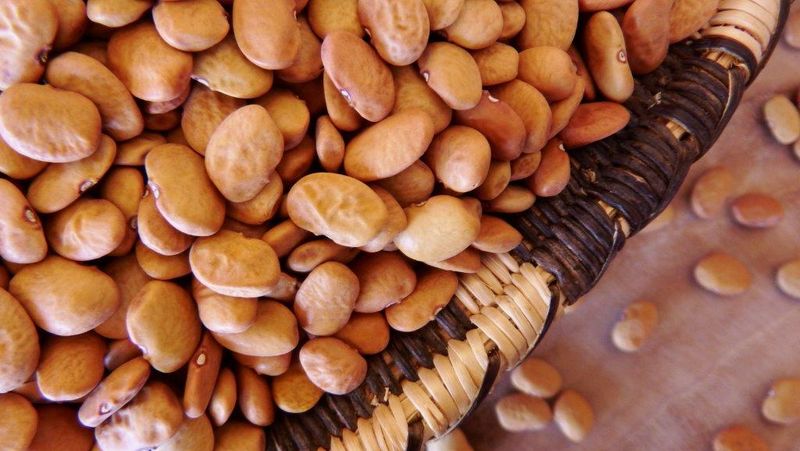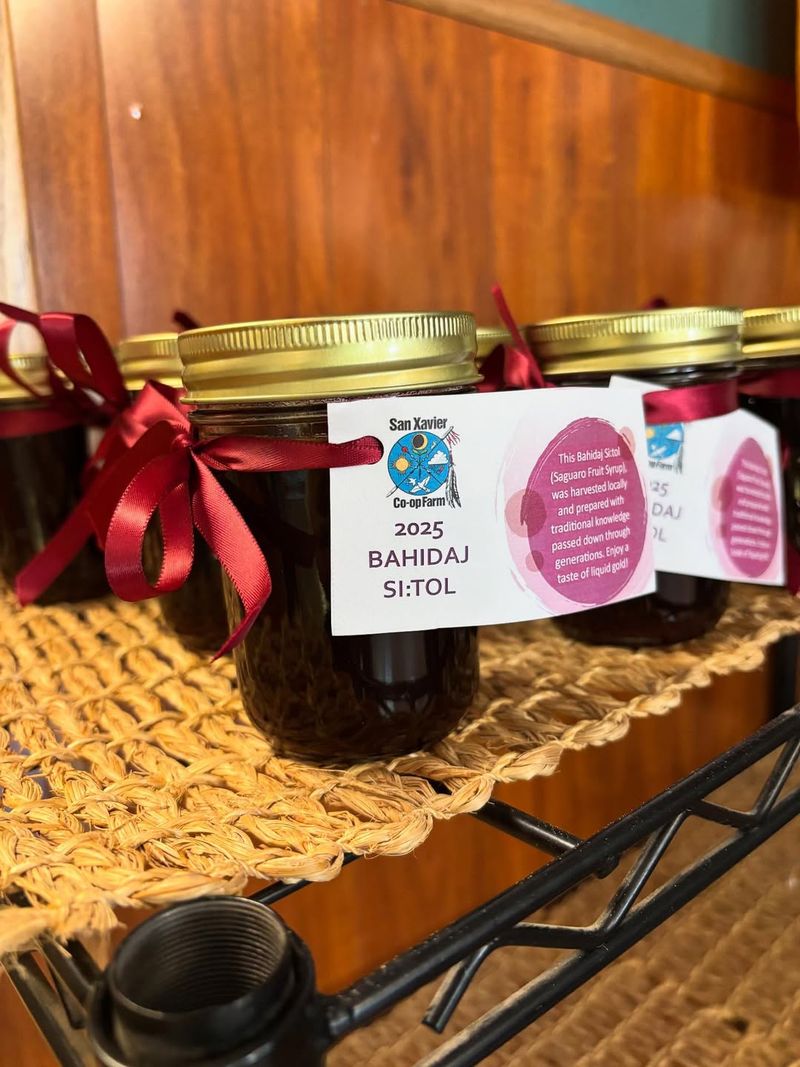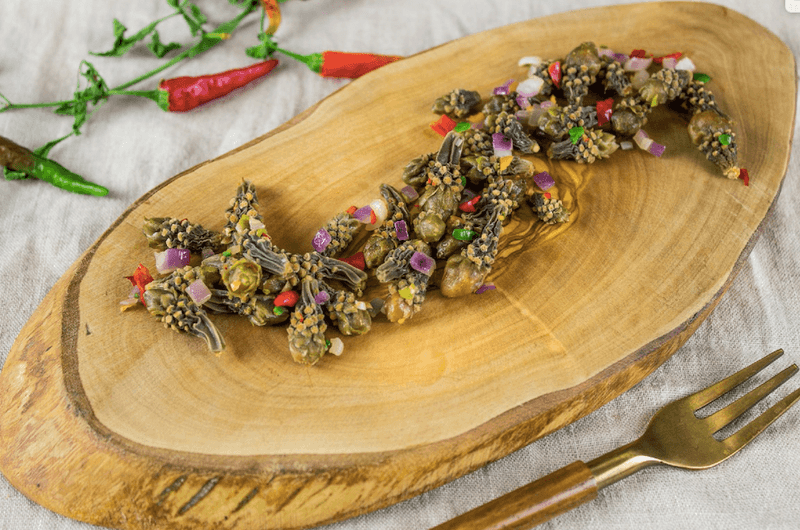Arizona’s food scene is full of surprises, especially when it comes to dishes made from desert ingredients. From cactus pads to mesquite pods, the state’s unique landscape has inspired some truly unusual foods. Many of these dishes might look strange at first glance, but once you take a bite, you’ll understand why locals can’t get enough of them.
1. Sonoran Hot Dog
Tucson gave the world this loaded masterpiece that combines the best of American and Mexican street food. Picture a plump hot dog wrapped in crispy bacon, nestled in a soft bolillo roll that’s been toasted to golden perfection.
The toppings are where things get wild. Pinto beans, fresh tomatoes, grilled onions, mayo, mustard, and spicy jalapeño sauce all pile on top. It looks like a food truck accident, but the flavors are incredible.
The smoky bacon pairs beautifully with the creamy toppings, while the beans add hearty substance. Every bite delivers a perfect balance of textures and tastes that keeps you coming back for more.
2. Arizona Cheese Crisp
Before quesadillas became trendy, Arizonans were making cheese crisps in their ovens and broilers. This simple creation starts with a flour tortilla brushed generously with butter, then topped with shredded cheese.
After a quick trip under the broiler, it emerges golden, bubbly, and impossibly crispy around the edges. At first glance, it resembles a flat pizza or an inside-out quesadilla. But the texture is what sets it apart.
The butter creates a crunchy, almost cracker-like base that shatters when you bite into it. The melted cheese adds richness without overwhelming the simplicity. It’s comfort food at its finest, proving that sometimes less really is more.
3. Prickly Pear Jelly
Walk through the Sonoran Desert in late summer, and you’ll spot magenta fruits dotting the prickly pear cacti. These fruits get transformed into one of Arizona’s most colorful spreads.
The jelly has an almost neon pink color that looks artificial, even though it’s completely natural. Many people hesitate when they first see it, wondering how cactus fruit could possibly taste good.
The flavor is surprisingly sweet and fruity, with notes reminiscent of watermelon and bubblegum. It’s unlike anything you’ve tasted before. Spread it on toast, swirl it into yogurt, or use it to glaze meats for a uniquely desert twist on your meals.
4. Mesquite Flour Baked Goods
Mesquite trees drop long seed pods every year, and Native Americans have been grinding them into flour for centuries. The resulting powder looks grainy and brown, nothing like the white flour you’re used to.
Bakers use it in pancakes, cookies, breads, and even brownies. The flour adds a nutty, slightly sweet flavor with hints of caramel and molasses. It might seem odd to bake with tree pods, but the results speak for themselves.
Mesquite flour is also packed with protein and fiber, making it a healthier alternative to regular flour. The unique taste elevates ordinary baked goods into something special and distinctly southwestern.
5. Navajo Fry Bread
Watch dough puff up in hot oil, and you’ll witness the magic of Navajo fry bread being born. Each piece emerges golden and uneven, sometimes as large as a dinner plate, with air pockets creating a pillowy texture.
The appearance is rustic and imperfect, but that’s part of its charm. You can eat it sweet with honey and powdered sugar, or turn it into an Indian taco piled high with seasoned meat, beans, lettuce, and cheese.
The outside is wonderfully crispy while the inside stays soft and tender. This beloved comfort food carries deep cultural significance and has been feeding families for generations across the Southwest.
6. Carne Seca
Long before jerky became a trendy snack, ranchers in Arizona were drying beef under the intense desert sun. The result looks like dark, stringy scraps of leather that don’t seem appetizing at all.
Carne seca translates to dry meat, and that’s exactly what it is until you rehydrate and cook it. The shredded beef gets simmered with onions, tomatoes, and chiles until tender. Then it’s tucked into tacos, burritos, or scrambled with eggs.
The flavor is deeply smoky and rich, with an authentic taste you can’t replicate any other way. It’s a traditional preparation method that honors the Southwest’s ranching heritage.
7. Cactus Fries
Yes, you’re actually eating cactus when you order these at Arizona restaurants. The prickly pear pads get cleaned of their spines, sliced into strips, battered, and fried until golden and crispy.
They look just like thick-cut french fries or fried pickles, but the color is distinctly green. The texture is crunchy on the outside with a slightly tangy, almost lemony flavor inside. Some describe it as similar to green beans or asparagus.
Dip them in ranch or salsa for the full experience. It’s a fun way to try desert vegetation without any danger of getting poked by spines, and the taste surprises everyone who tries them.
8. Date Shake
Arizona grows some of the best Medjool dates in the country, especially around Yuma and Phoenix. Blending these sweet fruits with milk and ice cream creates a shake with an unusual murky brown color that doesn’t photograph well.
Don’t let the appearance fool you. The first sip reveals a creamy, caramel-like sweetness that’s incredibly refreshing in the desert heat. The dates give it natural sweetness without being cloying or artificial tasting.
It’s thick enough to eat with a spoon but smooth enough to sip through a straw. Date shakes have been a desert tradition for decades, beloved by locals who know that beauty isn’t everything when it comes to delicious treats.
9. Chiltepin Peppers
These little peppers pack a serious punch despite being no bigger than a pea. Wild chiltepin peppers grow naturally in the Sonoran Desert, and they’re considered the mother of all chili peppers.
Their small size is deceiving. Pop one in your mouth, and intense heat floods your senses within seconds. But underneath the fire, there’s a smoky, fruity flavor that’s absolutely delicious.
Most people crush them into salsa or sprinkle them over food rather than eating them whole. The heat is intense but doesn’t linger as long as some other peppers. Locals prize them for their unique flavor profile that you simply can’t find in cultivated chili varieties.
10. Nopales Cactus Salad
Nopales are tender prickly pear cactus pads that get chopped and cooked with vegetables. The texture is what throws people off at first because they release a slimy substance similar to okra when cooked.
Many newcomers wrinkle their noses at the appearance and feel. But the flavor is bright, citrusy, and slightly tangy in the best possible way. The taste pairs beautifully with grilled meats, eggs, or as a taco filling.
Once you get past the texture, you’ll appreciate the unique flavor that’s both refreshing and earthy. Nopales are also incredibly nutritious, packed with fiber, vitamins, and antioxidants that make them a superfood of the desert.
11. Saguaro Seed Snacks
The iconic saguaro cactus produces fruit only once a year, and the Tohono O’odham people have harvested these seeds for countless generations. The seeds are tiny, black, and gritty looking when pressed together into bars or paste.
At first glance, they don’t look particularly appetizing. But roasted saguaro seeds have a nutty, earthy flavor that’s deeply satisfying. The taste carries cultural significance that goes back thousands of years.
These snacks represent traditional desert survival and the deep connection between Indigenous peoples and the land. Trying them offers a glimpse into ancient foodways that sustained communities long before grocery stores existed in the Southwest.
12. Tepary Beans
These ancient beans have been growing in the Sonoran Desert for over 5,000 years, long before modern agriculture arrived. They’re smaller than regular beans and have a mottled, almost dusty appearance when dried.
Many people assume they’re old or damaged beans because of their unusual look. But tepary beans are drought-resistant powerhouses that thrive in Arizona’s harsh climate. When cooked, they develop a rich, nutty flavor that’s more complex than pinto or black beans.
They’re also packed with protein and fiber, making them incredibly nutritious. The flavor and texture make them perfect for soups, stews, and refried beans that taste distinctly different from what you’re used to eating.
13. Saguaro Fruit Syrup
The giant saguaro cactus produces ruby-red fruit high on its arms during summer months. Indigenous communities sustainably harvest this rare fruit and transform it into jewel-toned syrup and jam.
The deep red color looks almost artificial, like food coloring was added. But it’s completely natural and comes from the fruit itself. The flavor is sweet-tart with delicate floral notes that taste unlike any other fruit you’ve tried.
Drizzle it over pancakes, fry bread, or ice cream for a truly Arizona experience. The syrup carries the essence of the desert in every drop, connecting you to the landscape in a delicious and meaningful way.
14. Cholla Buds
Cholla cactus flower buds get harvested in spring, and honestly, they look pretty gnarly. Even after the spines are removed, they resemble shriveled, dried worms or strange insects that you wouldn’t normally consider food.
The appearance definitely takes some getting used to. But after soaking and cooking with spices, cholla buds taste remarkably like a cross between asparagus and artichoke hearts. The flavor is earthy and slightly sweet with a tender texture.
They’re extremely high in calcium and have been a traditional food source for desert communities for centuries. Trying them connects you to ancient foodways while surprising your taste buds with unexpectedly delicious flavors from the desert.
